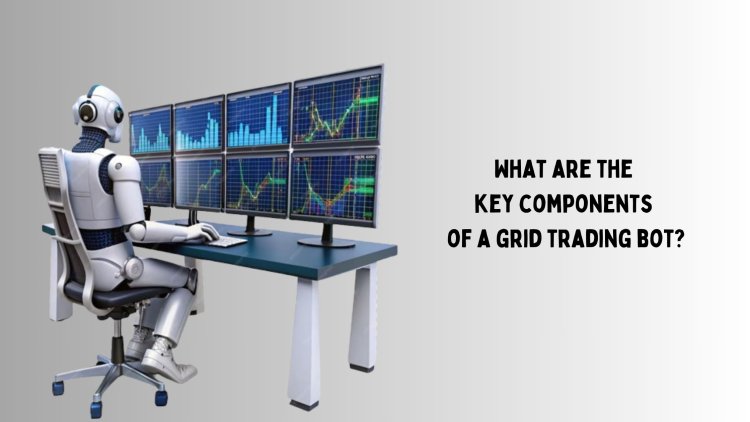What are the key components of a grid trading bot?
Automate profits by setting the perfect grid—let the bot do the work!
Share this Post to earn Money ( Upto ₹100 per 1000 Views )

Imagine you're on a peaceful beach, watching the waves come and go. You notice that the waves rise and fall within a certain range, never too high or too low. Now, imagine if you could somehow profit from this regular ebb and flow. This is the importance of a grid trading bot—a tool that captures the movement of market prices as they fluctuate, much like the waves on that beach.
At the heart of grid trading bot development are a few key components that allow it to operate smoothly and profit from market volatility. Let's go through it step by step.
1. Trading Pair
The first thing a grid trading bot needs is a trading pair—like picking two different currencies to work with. For example, it could be trading Bitcoin (BTC) against the U.S. Dollar (USDT). The bot will buy and sell these assets automatically as prices shift.
2. Grid Size
Imagine that the grid is a net that the bot is throwing over the market. This grid is divided into smaller sections, or intervals, where the bot places buy and sell orders. A grid with more sections can catch more market movements, but the size of the grid can vary depending on the trader's strategy. Smaller grids catch more frequent, smaller price changes, while larger grids target bigger movements.
3. Price Range
The price range is like setting boundaries for the bot to work within. It's the upper and lower limits of where you expect the price to move. The bot will only place orders within this range, ensuring it operates within the desired area, just like keeping the waves within a manageable section of the beach.
4. Order Volume
This refers to how much of the asset you want the bot to buy or sell at each interval. It’s similar to deciding how big or small each catch of the net should be.
5. Risk Management
A successful bot isn’t just about making profits—it’s about protecting your investments. Features like stop-loss and take-profit functions act as safety measures, ensuring that you can minimize risks while maximizing potential gains.
Many also compare grid trading to DCA bot development (Dollar-Cost Averaging), where traders make regular investments regardless of market conditions. However, the grid trading bot does this dynamically, making it a powerful tool for volatile markets.
In short, the grid trading bot’s structure is simple but highly effective. It leverages the natural ups and downs of the market, catching waves of opportunity within a predefined grid to make consistent profits.

 Elsamarie
Elsamarie 












